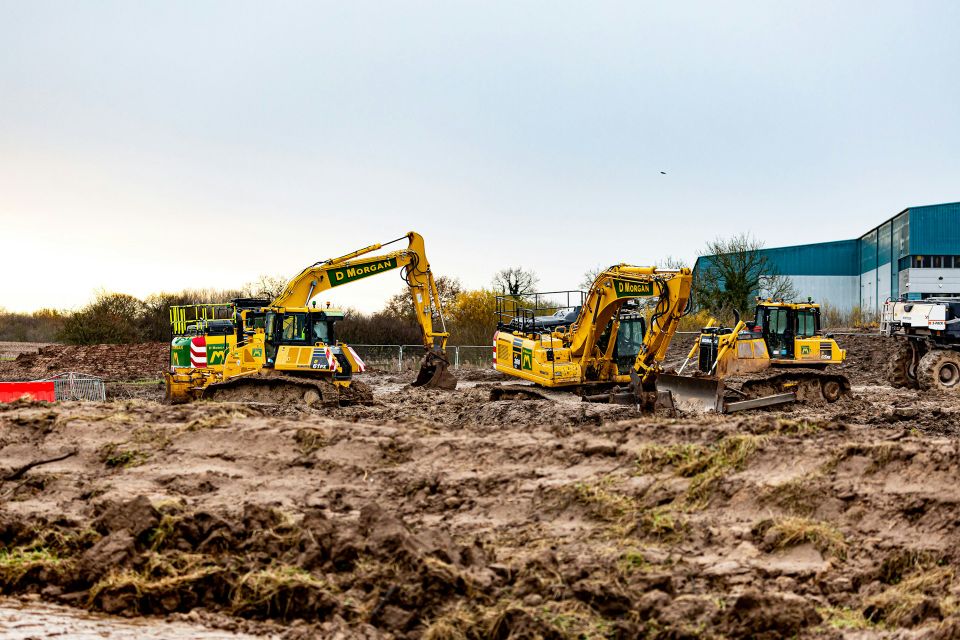When it comes to construction projects in Chattanooga, Tennessee, and Huntsville, Alabama, delays caused by wet soil conditions can be a major concern. Undeniably, overly saturated soils can bring construction timelines to a halt, hindering the structural integrity of the pavements and increasing expenses. In light of these challenges, soil dry down techniques emerge as an efficient solution to drying overly wet soils and expediting your construction projects.
In this comprehensive guide, we aim to delve into the world of soil dry down techniques, a crucial component of efficient soil improvement strategies for faster construction timelines. Our objective is to provide a solid understanding of the different approaches, their benefits, and ideal applications, as well as outline important best practices for efficient soil dry down implementation. As experts in Soil Improvement & Modification, Soil Stabilization, Full-Depth Reclamation, and Asphalt Pulverization, it is our mission to help Chattanooga and Huntsville's infrastructure professionals overcome construction challenges and maintain momentum.
Uncovering the Essentials of Soil Dry Down TechniquesSoil dry down techniques focus on accelerating the evaporation of excess moisture from the soil, enabling construction projects to proceed as planned. These methods leverage factors such as sunlight, air movement, and, in some cases, chemical compounds to expedite the drying process. Here are some widely used soil dry down methods:
- Solar Drying: This natural approach relies on the sun to evaporate excess moisture. By turning and levelling the soil, a larger surface area is exposed to sunlight, speeding up the drying process.
- Mechanical Drying: This method involves the use of heavy machinery to aerate, mix and redistribute the wet soil, ensuring even moisture content and more efficient solar drying.
- Chemical Drying: In this process, chemical additives such as quicklime are mixed with the wet soil, stimulating a chemical reaction that generates heat and dries the soil rapidly.
- Windrow Drying: Windrow drying consists of forming long, narrow piles of soil called windrows. Exposed to air movement and sunlight, these windrows promote faster evaporation of moisture.
Benefits of Implementing Soil Dry Down Techniques in Construction ProjectsIncorporating soil dry down techniques in your construction projects can lead to significant advantages, including:
- Accelerated Timelines: By efficiently addressing soil moisture challenges, construction projects can proceed without lengthy delays, ensuring timely completion.
- Enhanced Soil Quality: Dried soils are more stable and less prone to compaction issues, improving the structural integrity of pavements and foundations.
- Cost-Effective Solutions: Soil dry down methods mitigate the need for alternative material import, reducing overall project costs.
- Environmental Sustainability: Soil dry down techniques particularly solar and mechanical drying, leverage natural elements, minimizing the environmental impact of construction projects.
Determining the Correct Soil Dry Down Strategy for Your ProjectWith various techniques available, selecting the right approach for your specific project is critical. Consider the following factors when determining the ideal soil dry down method:
- Site-Specific Conditions: Analyze factors such as soil type, moisture content, and size of the area to determine the most effective drying technique for your project.
- Climate and Weather: Consider the prevailing weather conditions and potential for exposure to sunlight when selecting the most suitable method.
- Available Resources and Equipment: Assess your access to specialized machinery and expertise necessary to execute specific drying techniques.
- Budgetary Constraints: Evaluate the project budget and select a method that provides a balance between cost efficiencies and drying effectiveness.
Implementing Best Practices for Successful Soil Dry DownTo maximize the effectiveness of your soil dry down efforts, adhere to the following best practices:
- Ensure Proper Site Preparation: Prepare the site by removing vegetation and debris to optimize the chosen drying technique's effectiveness.
- Monitor Weather Conditions: Stay informed about weather forecasts and plan your drying activities during periods of favorable conditions (e.g., sunny and windy days).
- Employ Skilled Personnel: Collaborate with experienced professionals and ensure that all team members receive the necessary training and resources for successful implementation.
- Monitor and Adjust: Consistently monitor the drying process and make necessary adjustments to the technique based on progress and site conditions.
Embracing Soil Dry Down Techniques for Smoother Construction ProjectsThrough a thorough understanding of the different soil dry down techniques, their benefits, and ideal applications, construction professionals in Chattanooga, TN, and Huntsville, AL, can effectively tackle unwieldy soil conditions and accelerate their project timelines. By following best practices and properly selecting the most suitable method for specific project needs, soil dry down can become an invaluable tool in ensuring the smooth, efficient execution of your construction projects.
As a proven leader in Soil Improvement & Modification, Soil Stabilization, Full-Depth Reclamation, and Asphalt Pulverization, we are dedicated to providing comprehensive solutions that empower Chattanooga and Huntsville's infrastructure professionals to excel in their endeavors. Let Terra-Firma Stabilization & Reclamation help you conquer soil moisture challenges and maintain project momentum through our expertise and tailored services. Get in touch with us today to discover how our range of
soil dry down solutions can bring efficiency, stability, and success to your construction projects in Chattanooga, TN, and Huntsville, AL.

